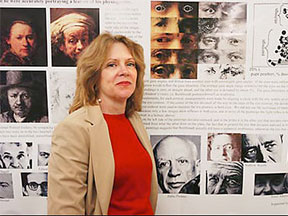 Harvard Medical School Professor Margaret S. Livingstone, Ph.D., is the recipient of the 2012 Ireland Distinguished Visiting Scholar Award, presented by the University of Alabama at Birmingham.
Harvard Medical School Professor Margaret S. Livingstone, Ph.D., is the recipient of the 2012 Ireland Distinguished Visiting Scholar Award, presented by the University of Alabama at Birmingham.
Livingstone, a neurobiologist best known for work on visual processing, is the author of “Vision and Art: The Biology of Seeing,” acclaimed in the art world. Her insights into the field include a simple explanation for the elusive smile of Leonardo da Vinci’s “Mona Lisa.”
Livingstone will deliver a free, public lecture, “What Art Can Tell Us About The Brain,” at 5:30 p.m. Tuesday, March 13, 2012, in UAB’s Alys Stephens Center, Jemison Hall, 1200 10th Ave. South. A public reception follows.
Some researchers believe that groups of neurons, each weakly tuned, can provide sharp recognition of a given stimuli. Livingstone studies how these clusters of tune-able neurons connect — and in which portions of the brain — as it processes color, motion and depth. Using anatomical studies, functional MRI imaging and biophysics, she has been a pioneer in better understanding these connections and pathways.
Her work reveals research of the way humans, especially artists, see the world. On her site she notes, “We have been looking at depth perception in artists, because poor depth perception might be an asset in a profession where the goal is to flatten a 3-D scene onto a canvas.” Her research “found evidence that a surprisingly large number of talented artists, including Rembrandt,” might have had stereoblindness, a complete lack of depth perception of visual stimuli from both eyes in combination. It can result from blindness in one eye or abnormal alignment of the eyes, or other unknown causes.
Each year the Ireland Award brings internationally renowned scholars in the arts and sciences to UAB to present a public lecture and participate in campus activities. The prize is made possible through an endowment established by Caroline P. and Charles W. Ireland.